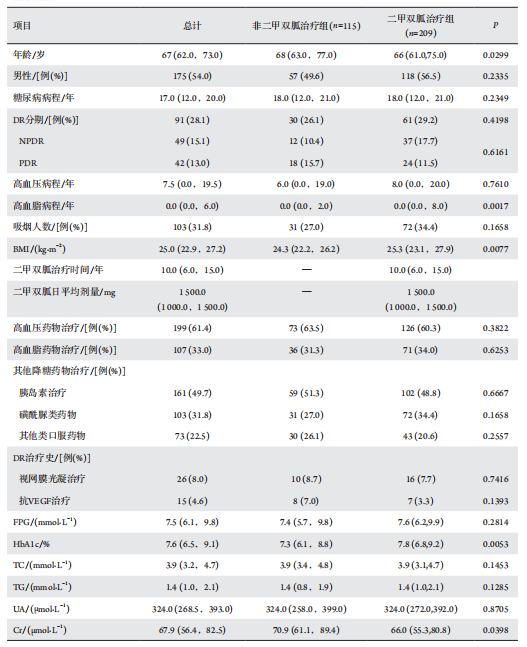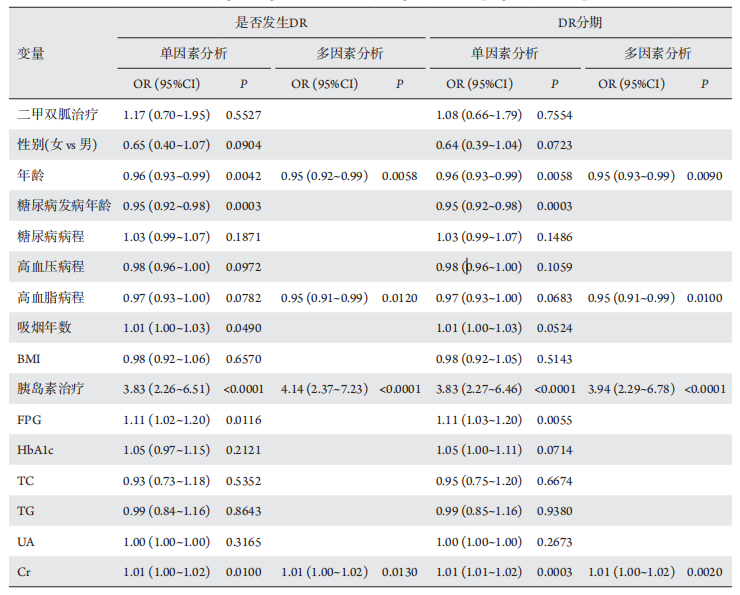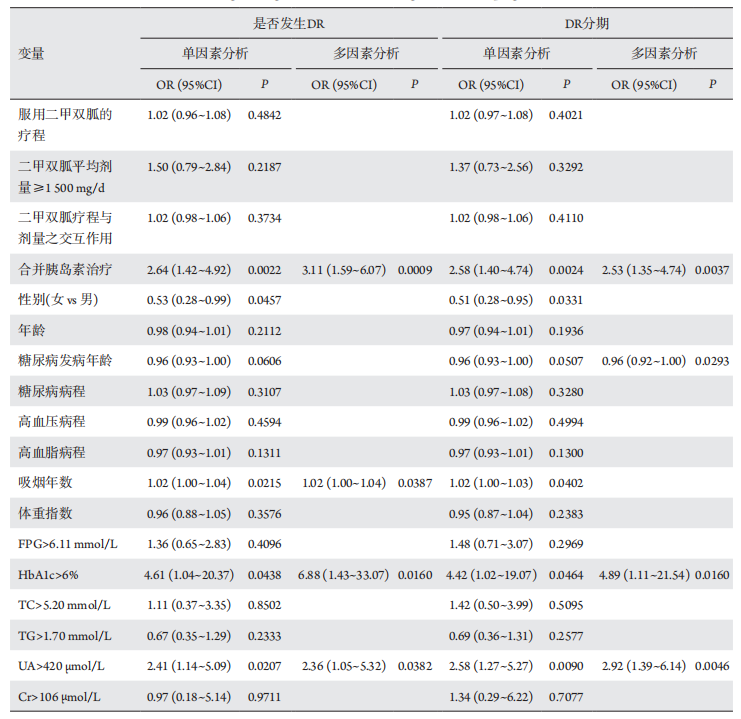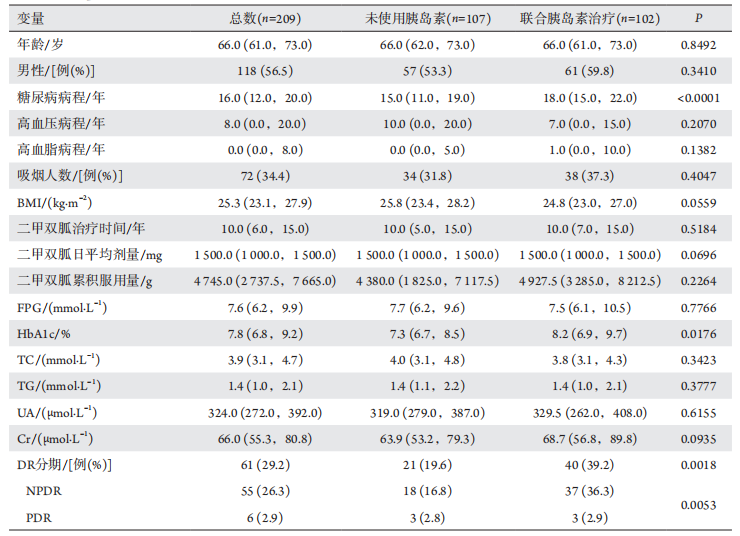1、Zavrelova H, Hoekstra T, Alssema M, et al. Progression and regression: distinct developmental patterns of diabetic retinopathy in patients with type 2 diabetes treated in the diabetes care system west-Friesland, the Netherlands[ J]. Diabetes Care, 2011, 34(4): 867-872.Zavrelova H, Hoekstra T, Alssema M, et al. Progression and regression: distinct developmental patterns of diabetic retinopathy in patients with type 2 diabetes treated in the diabetes care system west-Friesland, the Netherlands[ J]. Diabetes Care, 2011, 34(4): 867-872.
2、Effect of intensive blood-glucose control with metformin on complications in overweight patients with type 2 diabetes (UKPDS 34). UK Prospective Diabetes Study (UKPDS) Group[ J]. Lancet, 1998, 352(9131): 854-865.Effect of intensive blood-glucose control with metformin on complications in overweight patients with type 2 diabetes (UKPDS 34). UK Prospective Diabetes Study (UKPDS) Group[ J]. Lancet, 1998, 352(9131): 854-865.
3、Male?ki? S, Kusturica J, Gu?i? E, et al. Metformin use associated with protective effects for ocular complications in patients with type 2 diabetes - observational study[ J]. Acta Med Acad, 2017, 46(2): 116-123.Male?ki? S, Kusturica J, Gu?i? E, et al. Metformin use associated with protective effects for ocular complications in patients with type 2 diabetes - observational study[ J]. Acta Med Acad, 2017, 46(2): 116-123.
4、Fan YP, Wu CT, Lin JL, et al. Metformin treatment is associated with a decreased risk of nonproliferative diabetic retinopathy in patients with type 2 diabetes mellitus: a population-based cohort study[ J]. J Diabetes Res, 2020, 2020: 9161039.Fan YP, Wu CT, Lin JL, et al. Metformin treatment is associated with a decreased risk of nonproliferative diabetic retinopathy in patients with type 2 diabetes mellitus: a population-based cohort study[ J]. J Diabetes Res, 2020, 2020: 9161039.
5、Lindholm E, Agardh E, Tuomi T, et al. Classifying diabetes according to the new WHO clinical stages[ J]. Eur J Epidemiol, 2001, 17(11): 983-989.Lindholm E, Agardh E, Tuomi T, et al. Classifying diabetes according to the new WHO clinical stages[ J]. Eur J Epidemiol, 2001, 17(11): 983-989.
6、中华医学会眼科学会眼底病学组. 我国糖尿病视网膜病变临床诊疗指南(2014年)[ J]. 中华眼科杂志, 2014, 50(11): 851-865.
Ocular Fundus Group of Chinese Medical Association Ophthalmology Society. Clinical guidelines for the treatment of diabetic retinopathy in China (2014)[ J]. Chinese Journal of Ophthalmology, 2014, 50(11):851-865.中华医学会眼科学会眼底病学组. 我国糖尿病视网膜病变临床诊疗指南(2014年)[ J]. 中华眼科杂志, 2014, 50(11): 851-865.
Ocular Fundus Group of Chinese Medical Association Ophthalmology Society. Clinical guidelines for the treatment of diabetic retinopathy in China (2014)[ J]. Chinese Journal of Ophthalmology, 2014, 50(11):851-865.
7、Cui Y, Zhang M, Zhang L, et al. Prevalence and risk factors for diabetic retinopathy in a cross-sectional population-based study from rural southern China: Dongguan Eye Study[J]. BMJ Open, 2019, 9(9): e023586.Cui Y, Zhang M, Zhang L, et al. Prevalence and risk factors for diabetic retinopathy in a cross-sectional population-based study from rural southern China: Dongguan Eye Study[J]. BMJ Open, 2019, 9(9): e023586.
8、Han J, Li Y, Liu X, et al. Metformin suppresses retinal angiogenesis and inflammation in vitro and in vivo[ J]. PLoS One, 2018, 13(3): e0193031.Han J, Li Y, Liu X, et al. Metformin suppresses retinal angiogenesis and inflammation in vitro and in vivo[ J]. PLoS One, 2018, 13(3): e0193031.
9、Xu L, Kong L, Wang J, et al. Stimulation of AMPK prevents degeneration of photoreceptors and the retinal pigment epithelium[ J]. Proc Natl Acad Sci U S A, 2018, 115(41): 10475-10480.Xu L, Kong L, Wang J, et al. Stimulation of AMPK prevents degeneration of photoreceptors and the retinal pigment epithelium[ J]. Proc Natl Acad Sci U S A, 2018, 115(41): 10475-10480.
10、Chen YY, Shen YC, Lai YJ, et al. Association between metformin and a lower risk of age-related macular degeneration in patients with type 2 diabetes[ J]. J Ophthalmol, 2019, 2019: 1649156.Chen YY, Shen YC, Lai YJ, et al. Association between metformin and a lower risk of age-related macular degeneration in patients with type 2 diabetes[ J]. J Ophthalmol, 2019, 2019: 1649156.
11、Zhang Y, Chen F, Wang L. Metformin inhibits development of diabetic retinopathy through microRNA-497a-5p[ J]. Am J Transl Res, 2017, 9(12): 5558-5566.Zhang Y, Chen F, Wang L. Metformin inhibits development of diabetic retinopathy through microRNA-497a-5p[ J]. Am J Transl Res, 2017, 9(12): 5558-5566.
12、Joe SG, Yoon YH, Choi JA, et al. Anti-angiogenic effect of metformin in mouse oxygen-induced retinopathy is mediated by reducing levels of the vascular endothelial growth factor receptor Flk-1[ J]. PLoS One, 2015, 10(3): e0119708.Joe SG, Yoon YH, Choi JA, et al. Anti-angiogenic effect of metformin in mouse oxygen-induced retinopathy is mediated by reducing levels of the vascular endothelial growth factor receptor Flk-1[ J]. PLoS One, 2015, 10(3): e0119708.
13、Bakhashab S, Ahmed F, Schulten HJ, et al. Proangiogenic effect of metformin in endothelial cells is via upregulation of VEGFR1/2 and their signaling under hyperglycemia-hypoxia[J]. Int J Mol Sci, 2018, 19(1): 293.Bakhashab S, Ahmed F, Schulten HJ, et al. Proangiogenic effect of metformin in endothelial cells is via upregulation of VEGFR1/2 and their signaling under hyperglycemia-hypoxia[J]. Int J Mol Sci, 2018, 19(1): 293.
14、Liu T, Hong L, Yang Y, et al. Metformin reduces proteinuria in spontaneously hypertensive rats by activating the HIF-2α-VEGF-A pathway[ J]. Eur J Pharmacol, 2021, 891: 173731.Liu T, Hong L, Yang Y, et al. Metformin reduces proteinuria in spontaneously hypertensive rats by activating the HIF-2α-VEGF-A pathway[ J]. Eur J Pharmacol, 2021, 891: 173731.
15、Goggi JL, Haslop A, Boominathan R, et al. Imaging the proangiogenic effects of cardiovascular drugs in a diabetic model of limb ischemia[ J]. Contrast Media Mol Imaging, 2019, 2019: 2538909.Goggi JL, Haslop A, Boominathan R, et al. Imaging the proangiogenic effects of cardiovascular drugs in a diabetic model of limb ischemia[ J]. Contrast Media Mol Imaging, 2019, 2019: 2538909.
16、Chung YR, Ha KH, Kim HC, et al. Dipeptidyl peptidase-4 inhibitors versus other antidiabetic drugs added to metformin monotherapy in diabetic retinopathy progression: a real world-based cohort study[ J]. Diabetes Metab J, 2019, 43(5): 640-648.Chung YR, Ha KH, Kim HC, et al. Dipeptidyl peptidase-4 inhibitors versus other antidiabetic drugs added to metformin monotherapy in diabetic retinopathy progression: a real world-based cohort study[ J]. Diabetes Metab J, 2019, 43(5): 640-648.
17、Giuffrè G, Lodato G, Dardanoni G. Prevalence and risk factors of diabetic retinopathy in adult and elderly subjects: the casteldaccia eye study[ J]. Graefes Arch Clin Exp Ophthalmol, 2004, 242(7): 535-540.Giuffrè G, Lodato G, Dardanoni G. Prevalence and risk factors of diabetic retinopathy in adult and elderly subjects: the casteldaccia eye study[ J]. Graefes Arch Clin Exp Ophthalmol, 2004, 242(7): 535-540.
18、Segal P, Treister G, Yalon M, et al. The prevalence of diabetic retinopathy: effect of sex, age, duration of disease and mode of
therapy[ J]. Diabetes Care, 1983, 6(2): 149-151.Segal P, Treister G, Yalon M, et al. The prevalence of diabetic retinopathy: effect of sex, age, duration of disease and mode of
therapy[ J]. Diabetes Care, 1983, 6(2): 149-151.
19、Khan R , Singh S, Surya J, et al. Age of onset of diabetes and its comparison with prevalence and risk factors for diabetic retinopathy in a rural population of India[ J]. Ophthalmic Res, 2019, 61(4): 236-242.Khan R , Singh S, Surya J, et al. Age of onset of diabetes and its comparison with prevalence and risk factors for diabetic retinopathy in a rural population of India[ J]. Ophthalmic Res, 2019, 61(4): 236-242.
20、Nanayakkara N, Curtis AJ, Heritier S, et al. Impact of age at type 2 diabetes mellitus diagnosis on mortality and vascular complications: systematic review and meta-analyses[J]. Diabetologia, 2021, 64(2): 275-287.Nanayakkara N, Curtis AJ, Heritier S, et al. Impact of age at type 2 diabetes mellitus diagnosis on mortality and vascular complications: systematic review and meta-analyses[J]. Diabetologia, 2021, 64(2): 275-287.
21、Middleton TL, Constantino MI, Molyneaux L, et al. Young-onset type 2 diabetes and younger current age: increased susceptibility to retinopathy in contrast to other complications[ J]. Diabet Med, 2020, 37(6): 991-999.Middleton TL, Constantino MI, Molyneaux L, et al. Young-onset type 2 diabetes and younger current age: increased susceptibility to retinopathy in contrast to other complications[ J]. Diabet Med, 2020, 37(6): 991-999.
22、Li M, Wang Y, Liu Z, et al. Females with type 2 diabetes mellitus are prone to diabetic retinopathy: a twelve-province cross-sectional study in China[ J]. J Diabetes Res, 2020, 2020: 5814296.Li M, Wang Y, Liu Z, et al. Females with type 2 diabetes mellitus are prone to diabetic retinopathy: a twelve-province cross-sectional study in China[ J]. J Diabetes Res, 2020, 2020: 5814296.
23、Ruddy RM, Adams KV, Morshead CM. Age- and sex-dependent effects of metformin on neural precursor cells and cognitive recovery in a model of neonatal stroke[ J]. Sci Adv, 2019, 5(9): eaax1912.Ruddy RM, Adams KV, Morshead CM. Age- and sex-dependent effects of metformin on neural precursor cells and cognitive recovery in a model of neonatal stroke[ J]. Sci Adv, 2019, 5(9): eaax1912.






